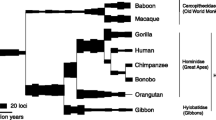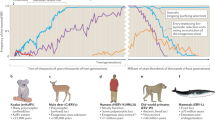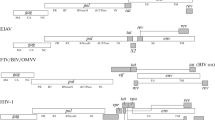Abstract.
Up to 10% of the mouse genome is comprised of endogenous retrovirus (ERV) sequences, and most represent the remains of ancient germ line infections. Our knowledge of the three distinct classes of ERVs is inversely correlated with their copy number, and their characterization has benefited from the availability of divergent wild mouse species and subspecies, and from ongoing analysis of the Mus genome sequence. In contrast to human ERVs, which are nearly all extinct, active mouse ERVs can still be found in all three ERV classes. The distribution and diversity of ERVs has been shaped by host-virus interactions over the course of evolution, but ERVs have also been pivotal in shaping the mouse genome by altering host genes through insertional mutagenesis, by adding novel regulatory and coding sequences, and by their co-option by host cells as retroviral resistance genes. We review mechanisms by which an adaptive coexistence has evolved. (Part of a Multiauthor Review)
Similar content being viewed by others
Author information
Authors and Affiliations
Corresponding authors
Rights and permissions
About this article
Cite this article
Stocking, C., Kozak, C.A. Endogenous retroviruses. Cell. Mol. Life Sci. 65, 3383–3398 (2008). https://doi.org/10.1007/s00018-008-8497-0
Published:
Issue Date:
DOI: https://doi.org/10.1007/s00018-008-8497-0




